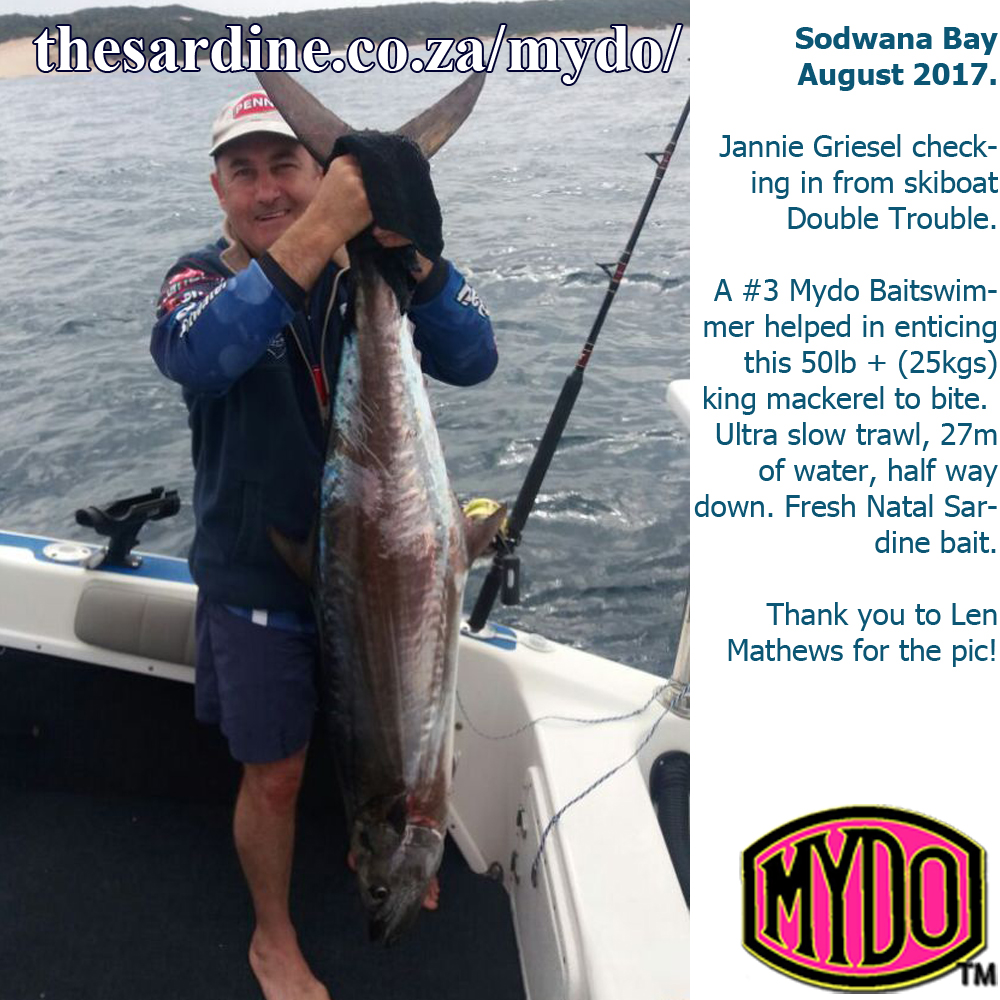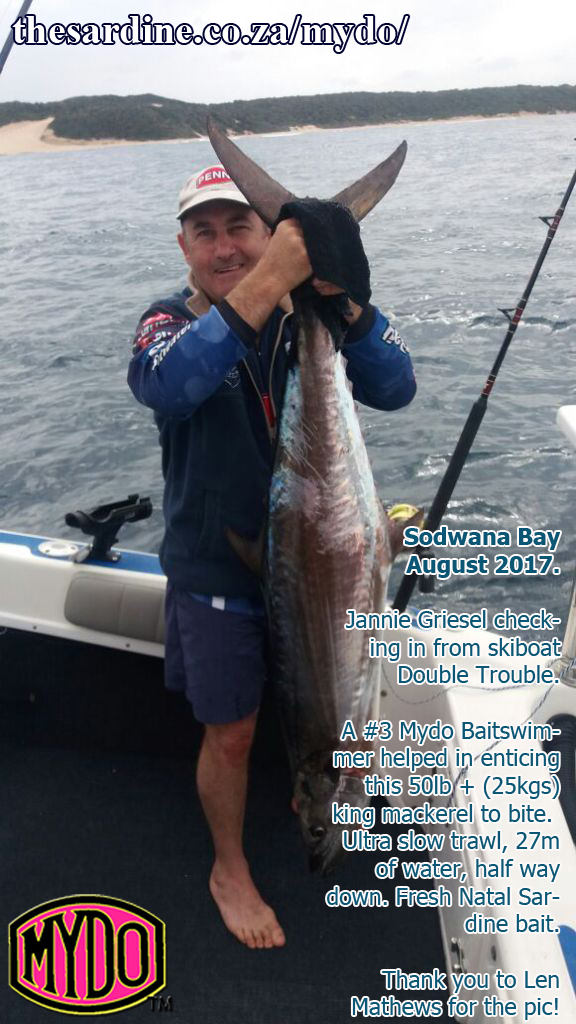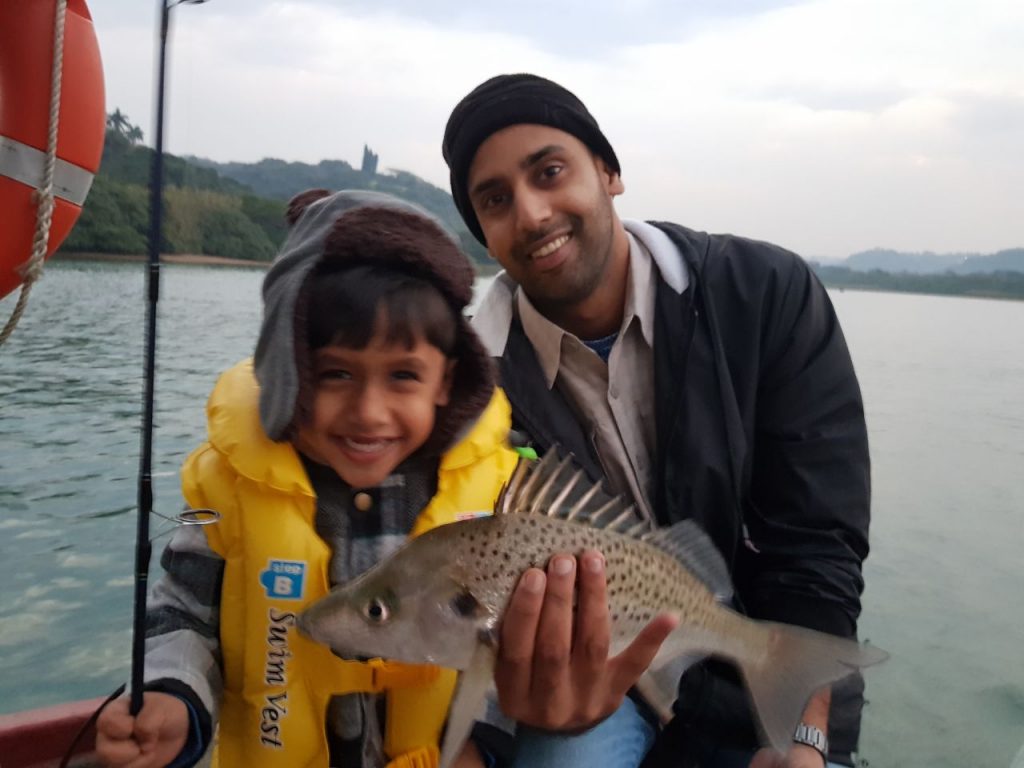
Umzimkulu GT in the evening
Umzimkulu GT in the evening: Estuary fishing is a technical art. You can’t decide to just go fishing. You got to research beforehand and time it right. So when Yousef Jadwat emailed me a while back to go fish the Umzimkulu, we had a good look, and chose 6pm high tide, with absolutely no moon – which happened upon the 27 June 2017.
Last night!
There are very many other technical variables to catching good fish in the Umzimkulu River, down here in Port Shepstone. In our lockup in Mozambique, I had been hoarding a lure. Brand new, but 20 years old. Three trebles. About 20cm. Black on top, silver below. Rapala don’t make anything hand-made anymore, but this one was. Balsa with wire through. Skill all the way. It was like a stretched out version of the infamous CD13, also defunct now. But it’s long narrow profile, and it’s gentle side to side action was exactly what we were going to need. And those colours!
So I had a Luck Shot #1 with my favourite orca 5 inch jerk tail. And my other favourite – Luck Shot #1 with a huge 7 inch split tail out too. It wasn’t a hundred metres, as we set out for the mouth, when I instinctively turned back and WHALLOP! A grey shoulder and huge fins were all I could see for the strike through the spray. It was merciless. An explosion, and the 8ft boat rod bent double, and the 50SH screamed. It was on my 20 year old lure! I was just thinking about those skinny little hooks. The drag was a bit heavy and Yousef could not get the rod out of the holder as the fish smoked line off the spool. And when I went to assist – the rod holder broke clean off the back of the boat! Where it’s been faithfully serving for 20 years too!
Well now Yousef had the rod and I had the lines cleared. I got to the drag and backed it right off – all the time worried about those skinny but sharp trebles. But Yousef did his job well and after some time we got a glimpse way down in the clear water. I had thought garrick right from the start. Those long fins haunting me. It was doing all the head shakes, short high speed runs, rapid turnarounds and staying deep. Then it popped up where we could see it proper in the afternoon light.
Kingfish!
The Umzimkulu is renowned for it’s little kingfish on lures. Usually Big-Eye Kingfish. But we have had plenty yellow ones, and the ultra-beautiful blue-fin versions. We never take any out, they release so easy if you are careful. Just don’t touch eyes or gills, lift carefully by the body, not the hook – and use a long-nose pliers to get the hook out fast. Tag. Very quick photo and release! Too easy.
But this one was huge in comparison. If it was a big-eye, it quite well have been record sized. They only get to 7 or 8kg’s max. Most records stand at about 4 or 5kg’s. But those big fins? I was wondering still.
Yousef started winning with the heavy tackle and next thing the fish was right there. Still fiesty, the fish started to get angry as it got closer. Then GASP! I saw the hook pull and the lure turned upwards! But bang the line went tight again – the tail treble, the third and last one, was stuck in the kingfish’s head. All the others were straight. And now he was mad! Tight little corkscrews at super high speeds. Just flashes really.
I had to do something so I grabbed the tiny emergency gaff and hung out off the back. I was getting dizzy with all the swerving going on but then he did the same circle twice and I poked him right in the tail – where those heavy scales and armour protect him from attack all his life. The gaff hook held as I pulled the little guy through the air backwards and on to the deck. Where the gaff fell apart!
And when I saw that it was actually a GT!
The hook that held, funnily enough, was real tough to remove. That skin up top there is soooo strong. We got some really good shots and a sequence of the release into the serene but colourful sunset on the river. Whooohooo! 1 for 1 on GT as Duarte would say!
In great spirits we patrolled with the same spread down past rock salmon alley one, around the submerged rail and road bridge of old, across perch channel, down the middle along the long wall of features, and into the wide open basin – that presents the foaming mouth of the river, to the warm clear Indian Ocean in winter time. Water was rushing in so we anchored about a hundred metres inside. Just in front of a prefect sandbank slowing the waters for us, and making it very pleasant to fish with some ultralight tackle.
The first grunter, the only fish that came home with us, made a great show of his first run, as he set off with the tide for the sun. It was always gonna be the kids turn, and the 5 year old Hamza accepted the rod from his Dad with enthusiasm and confidence. The drag was lekker. The rod and reel working so well. Circle hook. Not much current. And soon after some puffing and panting and pulling, there it was. A sterling example of a table-sized spotted grunter. Well pot sized! This one was going to be curry for sure.
The next rod went while we were still taking photographs, and the kid got another one! This kid has a bright future – especially with his already practising catch and release. Between the two of them, they released that lovely GT, and three grunter (plus about 5 strepies?!).
I am going to be working the Umzimkulu Estuary for the next two weeks. There are still some great slots available – get in touch on umzimkulu@gmail.com to get in on this type of fishing. Ot WhatsApp +27 79 326 9671
Click here for more estuary fishing options, along the eastern seaboard of Southern Africa














